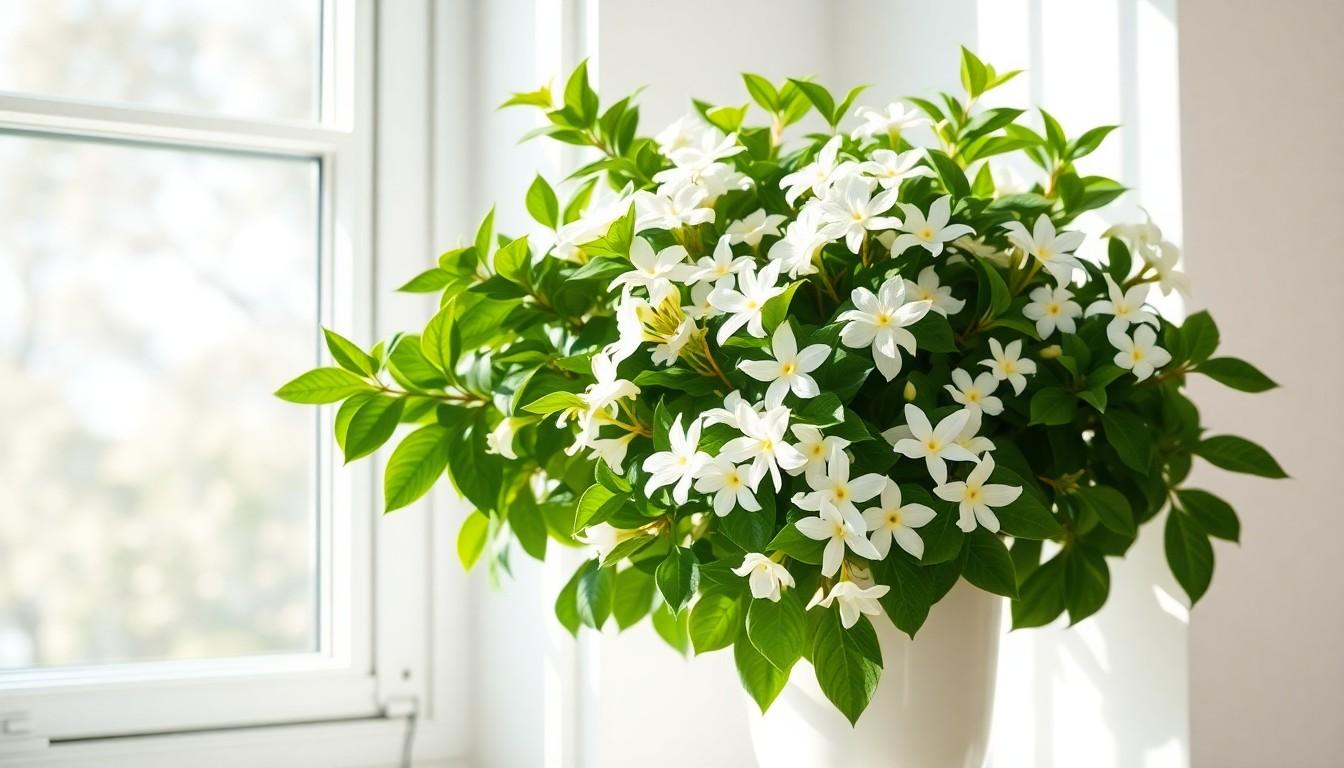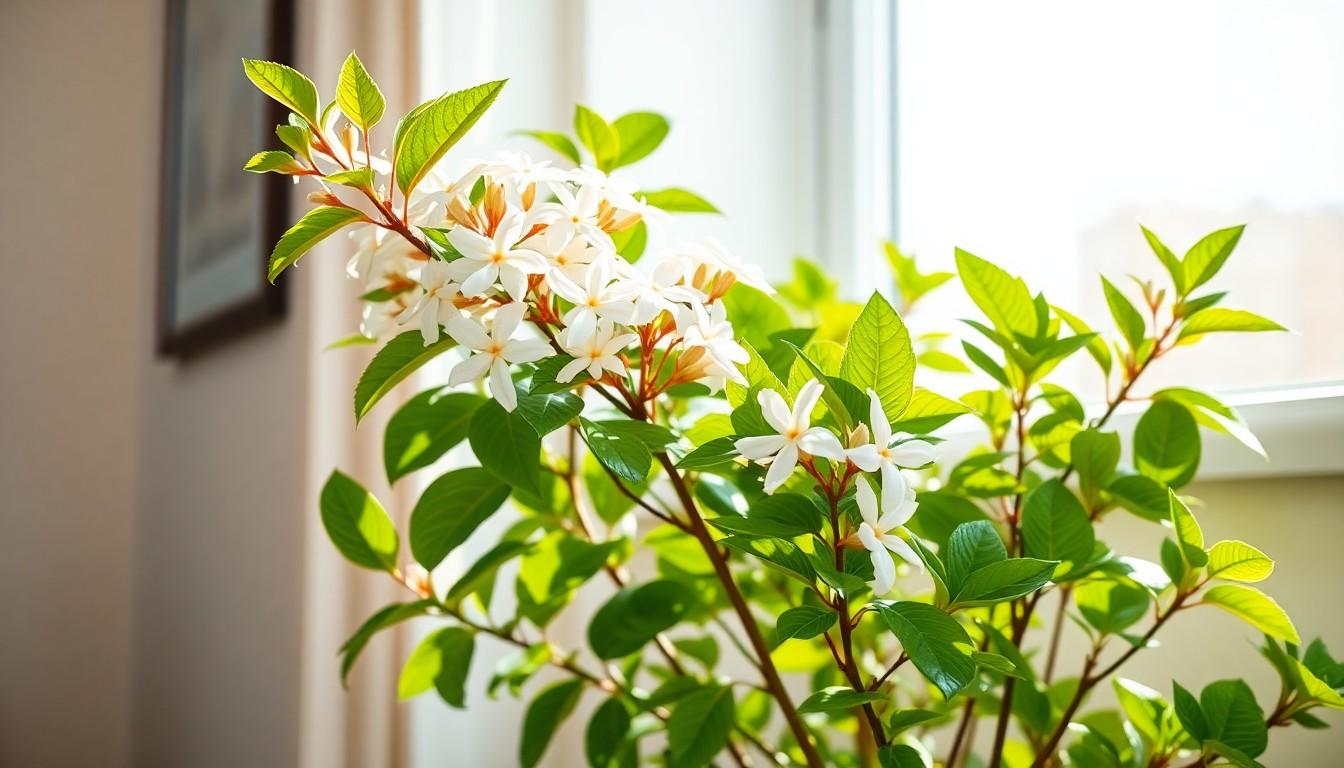If you think of
plant maintenance and your home is missing a touch of elegance and fragrance, meet the Arabian jasmine plant. This little beauty doesn’t just look good; it’s like having a personal perfumer right in your living room. With its delicate white flowers and intoxicating scent, it’ll have your guests wondering if you’ve secretly turned your home into a five-star resort.
But before you start daydreaming about your future garden oasis, let’s get real about care. The Arabian jasmine isn’t just a pretty face—it has its quirks and needs. From the right amount of sunlight to just the right amount of water, mastering its care can feel like a delicate dance. Fear not! With the right tips and a sprinkle of humor, your green thumb will be in full bloom before you know it.
Arabian Jasmine Plant Care
Arabian jasmine, known scientifically as
Jasminum sambac, thrives in warm, well-drained environments. This evergreen shrub can reach heights of 3 to 6 feet, making it a substantial presence in any garden or indoor space. Its small, white flowers emerge in clusters and release a sweet aroma, particularly during the evening. The scent of these blossoms can enhance any environment, creating a calming atmosphere.
Proper watering is essential for Arabian jasmine. During the growing season, this plant prefers consistently moist soil, without becoming waterlogged. Once winter arrives, watering should become less frequent, as the plant enters dormancy. Fertilizing with a balanced, water-soluble fertilizer every four to six weeks encourages healthy growth, especially during the spring and summer months.
Sunlight plays a critical role in its success. Arabian jasmine benefits from at least six hours of bright, indirect sunlight daily. Insufficient light can lead to reduced blooming and leggy growth. Ideal placement near south or west-facing windows fosters optimal growth while providing the necessary light conditions.
Pruning also helps maintain its shape and encourages bushier growth. Regular trimming after the blooming period, typically in late summer, can control size and promote new flower production. Separate from pruning, pest management remains important, as common pests like aphids and spider mites may target the plant. Regular inspection helps identify issues early, allowing for timely treatment with insecticidal soap or neem oil.
Arabian jasmine’s adaptability extends to various climate conditions. It grows well in USDA hardiness zones 8 to 11 and can be cultivated outdoors in warmer areas. In cooler climates, the plant adapts to container growing, allowing it to be brought indoors during cold weather.
Ideal Growing Conditions
The Arabian jasmine plant thrives under specific conditions. Understanding these needs fosters successful cultivation.
Light Requirements
Bright, indirect light is essential for the Arabian jasmine. Approximately six hours daily prevents reduced blooming. Low light levels may result in leggy growth, so proper placement near windows is crucial. Indoor planting benefits from south or west-facing windows. Outdoor plants flourish in partial shade or filtered sunlight, especially during the hottest part of the day. Adequate light exposure enhances flower production and overall health. Observing growth patterns can indicate whether the light conditions are ideal.
Temperature and Humidity
Warm temperatures suit the Arabian jasmine best. Ideal daytime temperatures range from 65 to 75 degrees Fahrenheit, while nighttime temperatures of 60 to 68 degrees Fahrenheit are most favorable. It tolerates brief temperature drops but thrives in consistent warmth. Humidity contributes significantly to its overall health. A humid environment between 40% and 60% supports healthy growth and flower production. Dry air may lead to stress and can provoke pest infestations. Misting or using a humidity tray can improve humidity levels, especially in drier climates.
Watering and Fertilization
Proper watering and fertilization play crucial roles in maintaining the health of the Arabian jasmine. The plant thrives when given consistent moisture during its growing season.
Watering Schedule
Watering occurs every 7 to 10 days during the growing season, keeping the soil consistently moist but not soggy. Reducing the frequency to every 2 to 3 weeks during winter allows the plant to rest. Checking the top inch of soil helps determine if watering is necessary; it should feel slightly dry before the next watering. Drooping leaves often indicate the plant needs water. Ensuring good drainage is essential to prevent root rot.
Recommended Fertilizers
Using a balanced, water-soluble fertilizer supports vigorous growth, especially from spring to summer. Select products with equal ratios of nitrogen, phosphorus, and potassium, like a 10-10-10 formulation. Fertilizing every four to six weeks promotes blooming and overall health. Diluting fertilizers to half-strength before application minimizes the risk of over-fertilization. Organic options, such as fish emulsion or seaweed extract, also provide nutrients while being less harsh on the plant.
Pest and Disease Management
Proper management of pests and diseases ensures the health of the Arabian jasmine plant. Identifying issues early contributes to better outcomes.
Common Pests
Common pests that afflict Arabian jasmine include aphids and spider mites. Aphids appear as small, green or black insects clustered on stems and leaves. They suck sap, causing leaves to curl and yellow. Spider mites produce tiny webs and create stippled damage on foliage. Monitoring plants regularly for these pests aids in early detection. Neem oil serves as an effective treatment, while insecticidal soap disrupts their life cycle. Regular cleaning of foliage also prevents infestations.
Disease Prevention Tips
Diseases such as root rot and powdery mildew can affect Arabian jasmine. Root rot develops from over-watering and poor drainage, so ensuring well-drained soil minimizes risk. Powdery mildew presents as a white, powdery coating on leaves in high humidity. Increasing air circulation and avoiding overhead watering reduces moisture levels on leaves. Fungicidal sprays can combat existing infections. Regular inspection of plants for any signs of disease helps maintain their overall health.
Pruning and Propagation
Pruning and propagation play significant roles in maintaining the Arabian jasmine plant’s health and beauty. Regular pruning encourages vigorous growth and enhances flowering.
Pruning Techniques
Pruning should occur right after blooming, preferably in late summer. Remove dead or damaged stems to promote a clean appearance and prevent disease. Trim back lengthy branches to encourage bushier growth. Cutting about one-third of the plant’s height stimulates new growth. Use clean, sharp shears to minimize stress on the plant. Ensuring even spacing between branches improves air circulation, which reduces disease risk. Regularly checking for any signs of disease during this process is essential for maintaining plant health.
Propagation Methods
Propagation can be efficiently achieved through stem cuttings. Select healthy, non-flowering stems about 4 to 6 inches long for the best results. Ensure the bottom cut is made just below a leaf node. Remove the lowest leaves to reduce moisture loss, then place the cutting in water or moist potting soil. Roots typically form within 2 to 4 weeks. For faster growth, applying rooting hormone can enhance success. Transplant rooted cuttings into individual pots once strong roots develop. Monitoring moisture levels during the rooting process ensures healthy development.
Enchanting Fragrance and Stunning Blooms
Caring for the Arabian jasmine plant can be a rewarding experience. With its enchanting fragrance and stunning blooms it brings beauty to any space. By providing the right balance of sunlight water and humidity this plant can thrive and flourish.
Regular pruning and pest management are vital for maintaining its health. Understanding its specific needs ensures that the Arabian jasmine remains a vibrant addition to the home or garden. With a little attention and care this delightful plant will continue to enchant for years to come.



